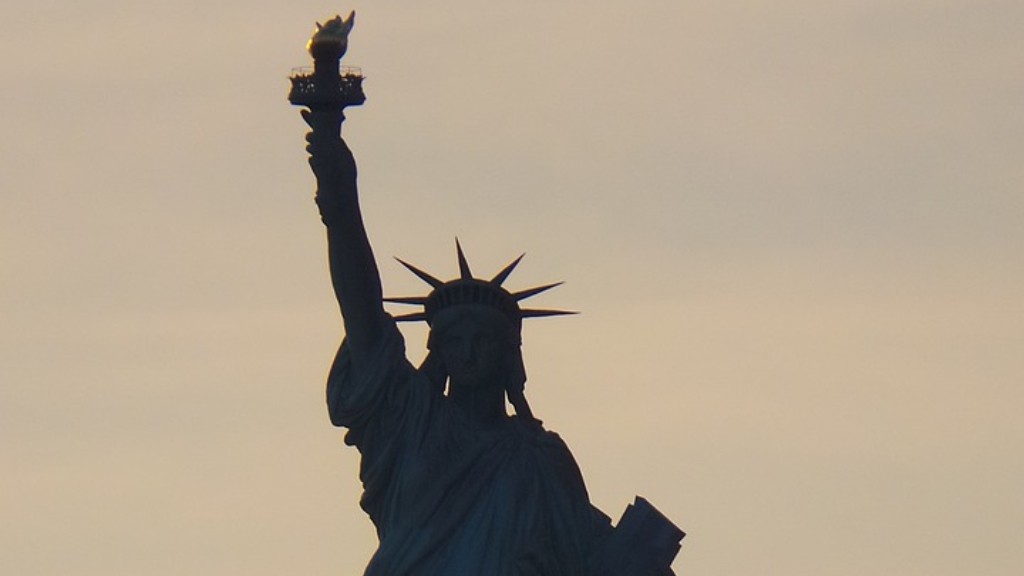Location of Mount Kilimanjaro
Mount Kilimanjaro is a dormant volcano located in Tanzania, East Africa and is the highest mountain in the African continent. The mountain is 19,341 feet (5,985 meters) high and is visible from almost 200 km away. The mountain is part of Kilimanjaro National Park, a UNESCO World Heritage Site.
Climate Zones of Mount Kilimanjaro
Mount Kilimanjaro has five different climate zones ranging from the tropical zone at the base of the mountain to the arctic zone on the summit. The five climate zones are the tropical zone, subtropical zone, temperate zone, subalpine zone and alpine zone.
The tropical zone, located at the base of the mountain, ranges from an average temperature of 25 to 27 degrees Celsius and is home to lush tropical rain-forests and an abundance of wildlife. This zone is the most populated, with settlements of the Chagga people and it is also the most diverse in terms of vegetation ranging from banana-trees, wild olives and African mahogany.
The subtropical zone lies just above the tropical zone and is characterized by semi-arid shrub-lands. This zone is at an average altitude of 6,000 feet and is home to a wide variety of wildlife ranging from hyraxes, mongooses, elephants and zebras. The average temperature in this zone is 11 to 20 degrees Celsius.
The temperate zone lies at an average altitude of 8,000 feet, with an average temperature of 5 to 7 degrees Celsius. This zone is home to large evergreen forests of oak and heather, as well as small mammals like the duiker. It is also a popular spot for hiking and camping.
Subalpine and Alpine Zones
The subalpine zone begins at an altitude of 13,000 feet and is characterized by a cold, dry climate and is home to an array of hardy plants including the giant groundsel, lobelias and everlasting flowers. The average temperature here is 4 to 6 degrees Celsius.
The alpine zone is the highest and coldest zone, situated at an altitude of 17,000 feet and an average temperature of -7 to -10 degrees Celsius. This zone is characterized by a barren landscape and is home to the iconic glaciers of Mount Kilimanjaro.
Impact of Climate Change on Mount Kilimanjaro
Climate Change has had a devastating impact on Mount Kilimanjaro, with the glaciers retreating by 80% between 1912 and 2011. This has had drastic implications on the flora and fauna of the mountain as they are unable to adapt to the changing temperatures. A study by the University of Maryland found that the glaciers could vanish as soon as 2022, due to climate change and increasing pollution.
The melting of the glaciers also has a severe impact on the flora and fauna of the mountain and its surrounding areas. The melting glaciers release large amounts of freshwater into the surrounding ecosystems, affecting natural vegetation and animal habitats. This in turn affects local livelihoods as crops and livestock are affected, reducing food security.
Adaptation Strategies for Climate Change
In order to mitigate the impact of climage change on Mount Kilimanjaro, local communities and authorities have adopted a number of adaptation strategies. These include planting trees to reduce deforestation, preserving traditional animal breeding practices and introducing sustainable agriculture methods.
In addition, local communities have also adopted traditional water management methods to reduce water shortages and improve water quality. This helps to preserve local biodiversity as water sources are maintained. Furthermore, the local communities have set up a number of nature reserves to protect local wildlife and habitats, as well as ecological education initiatives to raise awareness of the importance of preserving the mountain.
Conservation Efforts
In order to protect and conserve the climate zones of Mount Kilimanjaro, various international conservation efforts have been put in place. One such effort is the International Resort on Mount Kilimanjaro, which was created in partnership with local authorities, NGOs and the United Nations Development Program. This resort offers eco-tourism services, with an emphasis on environmental sustainability.
The resort also offers educational programs for visitors to learn about the importance of protecting the mountain and its climate zones. The resort attempts to raise awareness of climate change and its impact on the mountain as well as promoting sustainable development practices. The resort also provides local communities with employment opportunities, allowing them to have a source of income while protecting the environment.
International Organizations
International organizations such as the United Nations Environment Programme (UNEP) have provided funding and resources to help with the conservation of Mount Kilimanjaro and its climate zones. UNEP has funded various research projects, such as a study conducted by the University of Virginia to monitor the effects of climate change on the mountain. The organization has also supported the establishment of the International Resort on Mount Kilimanjaro, providing financial and technical support for the project.
International organizations have also taken an active role in advocating for the protection of Mount Kilimanjaro and its climate zones. Organizations such as the World Wildlife Fund (WWF) and the Nature Conservancy (TNC) have set up campaigns to raise awareness of the need to protect the mountain and its climate zones. Through these campaigns, they have encouraged governments and the public to take action and to support the conservation efforts.
Conclusion
Mount Kilimanjaro is a unique and fascinating mountain, with its five different climate zones ranging from tropical to alpine. Unfortunately, the mountain has been greatly impacted by climate change, with the glaciers retreating by 80% since 1912. In order to mitigate the impact of climate change, local communities, authorities and international organizations have taken several steps to protect and conserve the mountain and its climate zones. These efforts include the establishment of nature reserves, eco-tourism initiatives and raising of awareness of the importance of preserving the mountain. With sustained efforts and commitment from all involved parties, Mount Kilimanjaro and its climate zones can be protected for generations to come.
